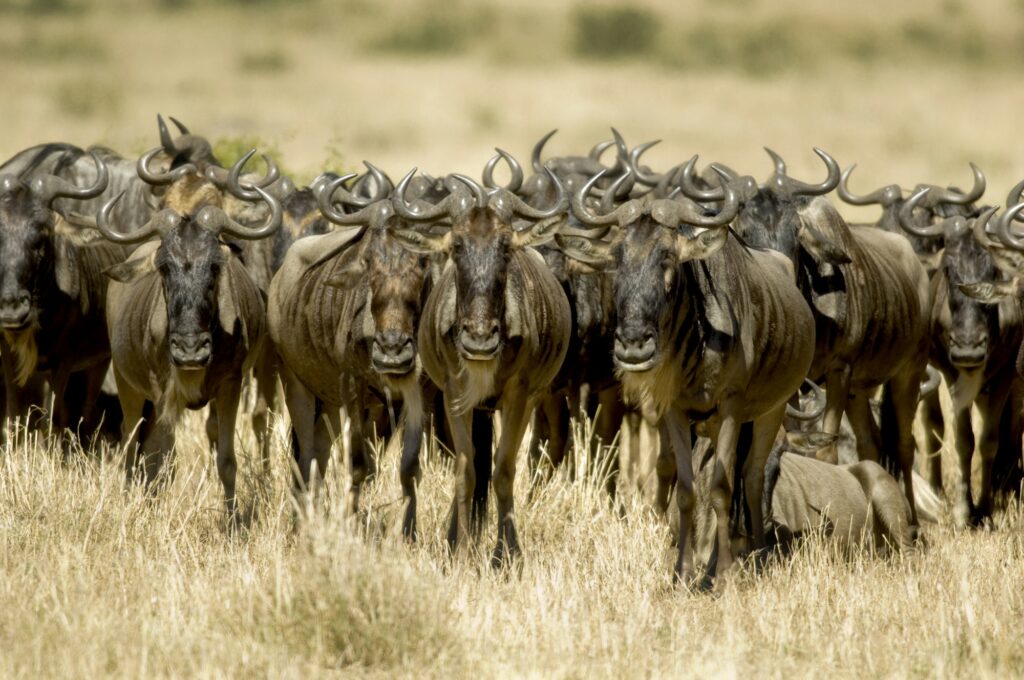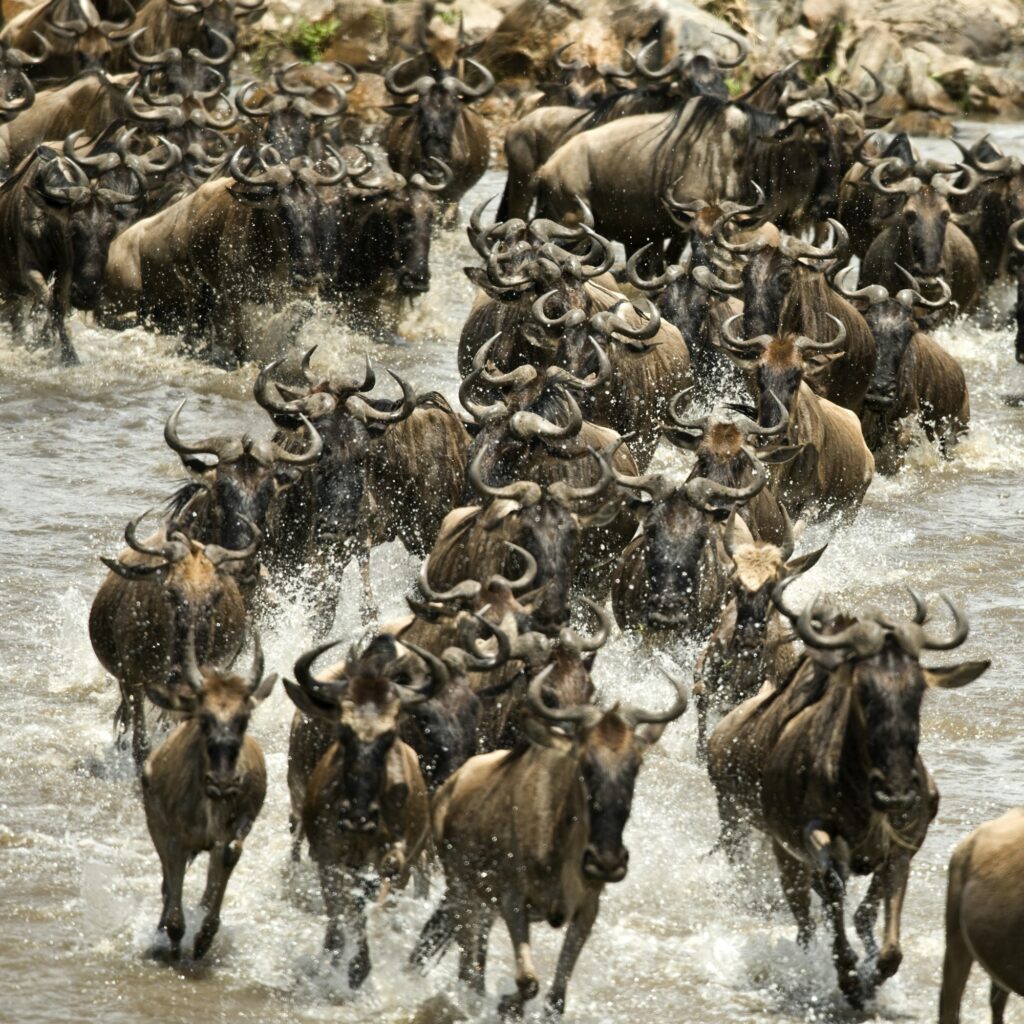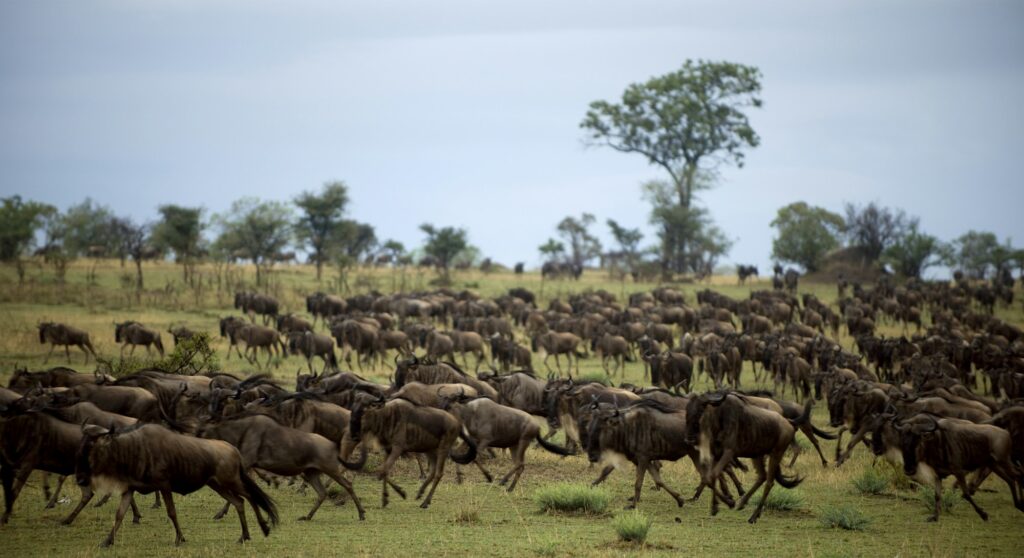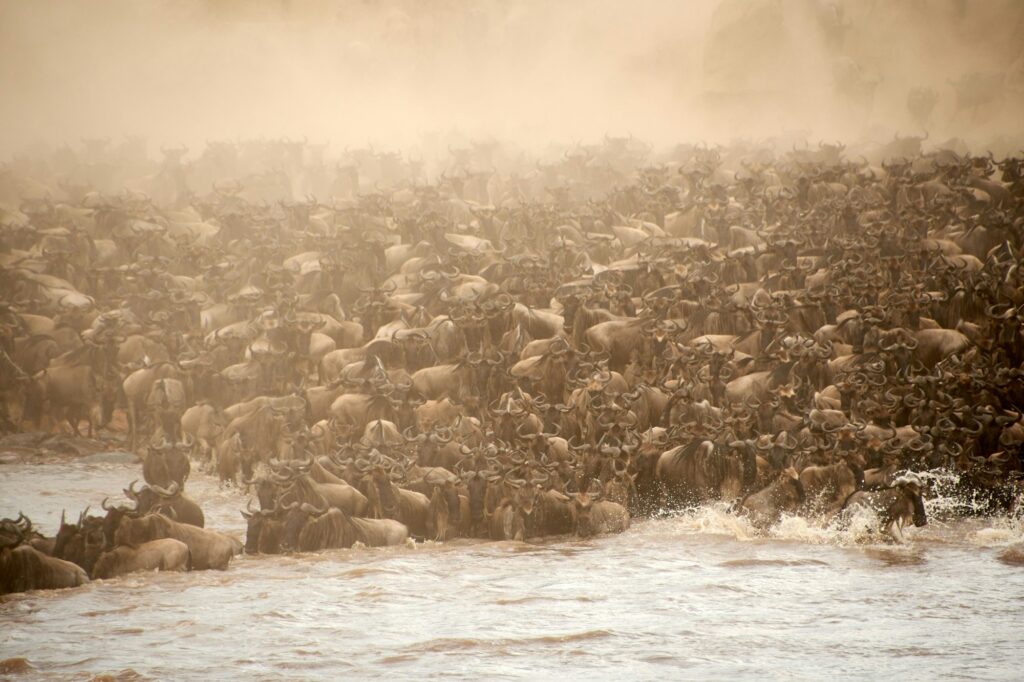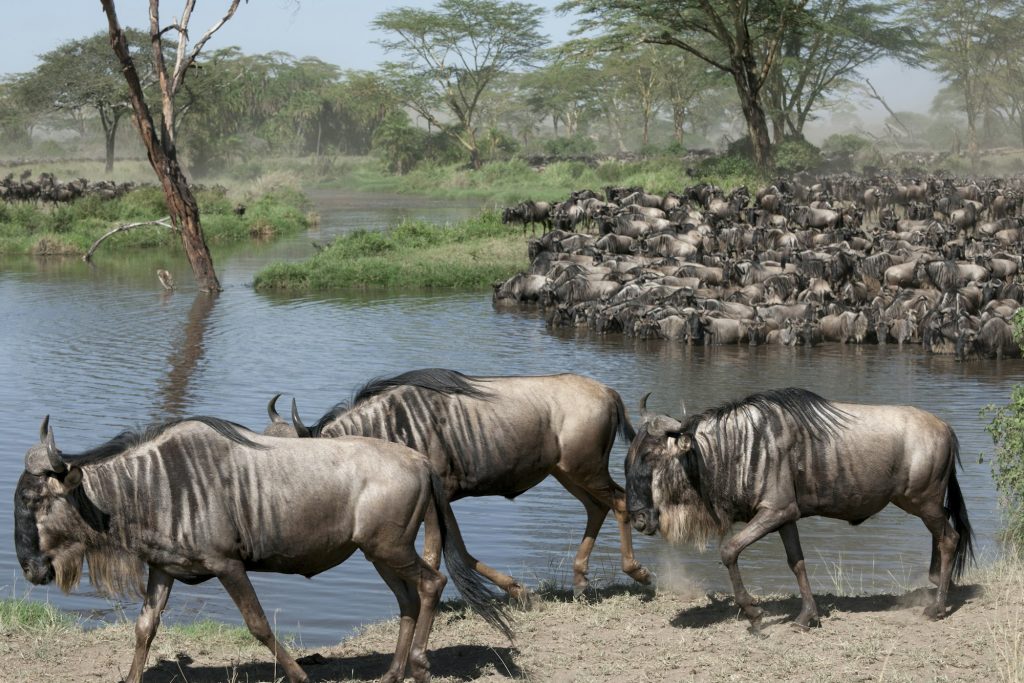PRICE PER PERSON
$260
duration
DAY TRIP
Min people
1 PEOPLE
MIN AGE
6+ YEARS
tour type
HIKING, COFFEE & WATERFALLS TOUR
OVERVIEW
The Great Serengeti Migration is one of the most incredible natural spectacles on Earth, and Lobo Africa offers you the chance to witness this awe-inspiring event up close.
Every year, over 1.5 million wildebeest, accompanied by hundreds of thousands of zebras and gazelles, journey across the Serengeti in search of fresh grazing grounds.
This mass movement of animals, driven by instinct and survival, is a breathtaking experience that draws wildlife enthusiasts and photographers from around the world.
Whether you want to witness the calving season in the southern Serengeti or the dramatic river crossings at the Grumeti and Mara Rivers, our expertly crafted safaris ensure that you are in the right place at the right time for the best views of the migration.
The Migration Journey: What to Expect
The Great Migration is a year-round phenomenon, with different phases occurring as the herds move across the Serengeti and into the Masai Mara in Kenya. Depending on the time of year, you can experience different stages of the migration, from the birth of thousands of wildebeest calves to the intense drama of river crossings where crocodiles and predators await.
-
December to March: Calving Season (Southern Serengeti)
The migration begins in the southern Serengeti Plains and the Ngorongoro Conservation Area, where the wildebeest give birth to their young. Over 500,000 calves are born during this time, and the abundance of newborns attracts predators like lions, cheetahs, and hyenas. This period is excellent for those wanting to see predator-prey interactions and experience the beauty of the Serengeti’s green season. -
April to June: The Move North (Central & Western Serengeti)
As the rains end, the herds move northwards to the central Serengeti, passing through the lush plains of Seronera. By May and June, the wildebeest start gathering in massive numbers in the Western Corridor near the Grumeti River, where they face their first significant challenge: crossing the river filled with hungry crocodiles. This part of the migration is dramatic and thrilling, offering excellent photographic opportunities. -
July to September: The Mara River Crossing (Northern Serengeti)
One of the most famous and dramatic events of the Great Migration occurs between July and September when the herds reach the Mara River in the northern Serengeti. The river crossings are intense, as the wildebeest and zebras must brave the rushing waters and avoid the jaws of waiting crocodiles. Witnessing thousands of animals risk their lives to cross the river is a heart-pounding and unforgettable experience. -
October to November: Return to the South
After spending time in the Masai Mara in Kenya, the herds begin their journey back to Tanzania, moving through the northern Serengeti and gradually returning to the southern plains by November. This is a quieter time to see the migration, with fewer crowds but still plenty of wildlife action.
Why Choose Lobo Africa for the Great Migration?
-
Expert Guides
Our highly experienced guides have an intimate knowledge of the Serengeti and the migration patterns, ensuring you get the best vantage points to witness this incredible event. They will explain the behavior of the animals, track the movements of the herds, and ensure your safari is both informative and thrilling. -
Prime Locations
We carefully select camps and lodges that are strategically located along the migration routes. Whether it’s a luxurious tented camp in the central Serengeti or a mobile camp that follows the herds, you’ll be staying close to the action. -
Private Game Drives
Our private game drives allow you to explore the Serengeti at your own pace and enjoy uninterrupted views of the migration. You can linger at a river crossing or follow a hunting lion pride without the pressure of group schedules. -
Tailor-Made Safaris
We understand that every traveler is unique, so we offer tailor-made migration safaris to match your interests, preferences, and travel style. Whether you’re a photographer looking for the perfect shot, a family wanting a kid-friendly adventure, or a couple seeking a romantic wildlife escape, we’ll design the ideal safari for you.
Best Time to Witness the Great Migration
The best time to witness the Great Migration depends on what you want to experience:
- December to March: Best for calving season and predator action in the southern Serengeti.
- April to June: Great for viewing the massive herds in the central and western Serengeti and the dramatic Grumeti River crossings.
- July to September: The iconic Mara River crossings take place during this period in the northern Serengeti.
- October to November: Witness the herds on their journey southward, with fewer tourists and excellent wildlife viewing in the northern and central Serengeti.
Activities on a Great Migration Safari
-
Game Drives:
The core of any migration safari is the game drive, where you can follow the herds and witness wildlife action. Our safari vehicles are designed for comfort and offer excellent visibility for photography. -
Hot Air Balloon Safaris:
For a unique perspective of the migration, we offer hot air balloon safaris over the Serengeti. Drift silently above the plains at sunrise, watching the herds move below, followed by a champagne breakfast in the bush. -
Walking Safaris:
Get closer to nature with a guided walking safari in the Serengeti. Accompanied by an experienced guide and ranger, explore the savannah on foot, learning about the smaller aspects of the ecosystem while keeping a lookout for wildlife. -
Cultural Tours:
Add a cultural dimension to your safari by visiting a traditional Maasai village. Learn about the Maasai people’s way of life, their connection to the land, and their role in the conservation of the Serengeti ecosystem. -
Bush Dinners:
After a thrilling day on safari, enjoy a bush dinner under the stars. Savor delicious local and international cuisine while surrounded by the sounds of the African wilderness.
FAQs
1. When is the best time to see the river crossings?
The Mara River crossings usually take place between July and September, but they can vary depending on the rains. Our team will monitor the movement of the herds to ensure you have the best chance of witnessing this event.
2. How close will we get to the animals?
During the game drives, you’ll get close enough to the animals for fantastic views and photography, but always at a safe distance that ensures both your safety and the well-being of the wildlife.
3. Is the Great Migration suitable for families?
Yes, a migration safari can be an exciting experience for families. We offer family-friendly accommodations and tailored itineraries that include shorter game drives and engaging activities for children.
4. How long should we spend on a migration safari?
We recommend at least 5 to 7 days to fully experience the migration. This gives you ample time to witness different aspects of the event, explore multiple regions of the Serengeti, and enjoy a range of activities.
5. What should we pack for the migration safari?
Comfortable clothing, sturdy shoes, a good camera with a zoom lens, binoculars, sunscreen, and a hat are essential. We also recommend bringing layers for the cooler mornings and evenings.
At Lobo Africa, we are committed to providing you with an exceptional Great Migration Safari experience, whether you are a wildlife enthusiast, photographer, or simply seeking the adventure of a lifetime.
Witness the circle of life unfold before your eyes in one of the most iconic and spectacular wildlife migrations in the world.
Request a Custom Safari
Why book with us
- Customer care available 24/7
- Hand-picked Populer Tours & Activities
- Tailor Made Your Own Itineraries
- The airport Pick-up and Transfer
- Best Accommodations

Ready to explore more?
Our travel experts are ready to start creating your tailor-made trip.
For More Exciting & Better Value Safari.
- +255 62 618 1355
-
info@loboafrica.com
